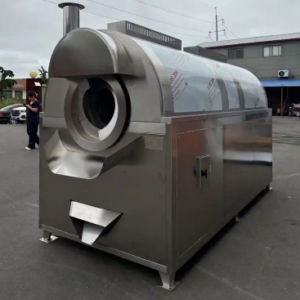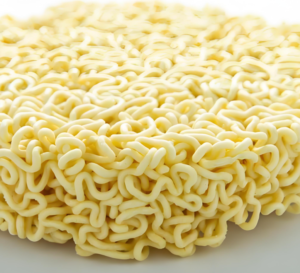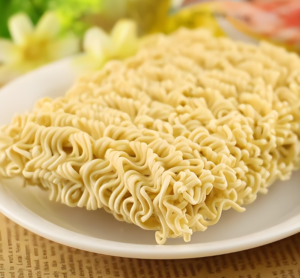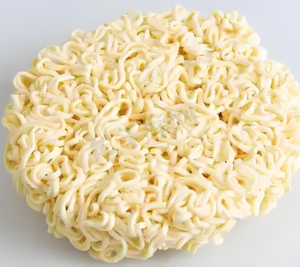<h1>The History of Macaroni: From Ancient Origins to Global Trade</h1>Introduction
Pasta, including macaroni, has become a staple in kitchens worldwide, but its journey spans centuries of innovation and cultural exchange. This article explores the rich history of macaroni, tracing its evolution from humble beginnings to a key player in international trade. As a versatile food product, macaroni highlights the intersection of culinary tradition and global commerce, making it relevant for B2B professionals in the food industry.
macaroni making machine
ToggleUnderstanding this history not only provides cultural insights but also reveals opportunities in export markets, production techniques, and consumer trends. Keywords like “macaroni history,” “pasta trade,” and “global pasta industry” underscore its enduring appeal and economic significance.
Ancient Roots of Macaroni
The origins of macaroni can be traced back to ancient civilizations, where early forms of pasta emerged as a practical food source. Archaeological evidence suggests that the Etruscans and ancient Romans consumed pasta-like foods made from durum wheat as early as 500 BC. These early versions were simple, dried dough shapes that served as portable, long-lasting meals for travelers and soldiers.
In Italy, macaroni is believed to have evolved from these ancient grains. The word “macaroni” derives from the Italian “maccheroni,” possibly linked to the Greek “makaria,” meaning food made from barley. By the time of the Roman Empire, pasta was a common dish, often boiled and served with sauces, reflecting early agricultural advancements in the Mediterranean region.
This period laid the foundation for macaroni’s global spread, as trade routes facilitated the exchange of ingredients and recipes. For B2B stakeholders, recognizing these ancient roots can inform strategies in sourcing raw materials like durum wheat, which remains a key export commodity today.
Medieval and Renaissance Developments
During the Middle Ages, macaroni production gained momentum in Italy, particularly in regions like Sicily and Naples. Arab influences, following the Norman conquest of Sicily in the 11th century, introduced advanced milling techniques and new wheat varieties, enhancing pasta quality. By the 14th century, references to macaroni appeared in Italian literature, such as in the works of poet Boccaccio, indicating its rise as a dietary staple.
The Renaissance era further propelled macaroni’s popularity, with cookbooks like “The Art of Cooking” by Martino da Rossi featuring recipes for various pasta shapes. This period saw the establishment of the first pasta guilds in Italy, where craftsmen perfected drying methods to extend shelf life, making macaroni ideal for trade.
For foreign trade professionals, this historical phase underscores the importance of innovation in food processing. Early trade networks between Italian city-states and the rest of Europe set precedents for modern B2B pasta exports, emphasizing quality control and branding as competitive advantages.
The Industrial Revolution and Mass Production
The 19th century marked a turning point for macaroni with the advent of industrialization. In 1835, Italian engineer Cesare Barilla founded what would become one of the world’s largest pasta companies, introducing mechanized production lines that revolutionized manufacturing. This innovation allowed for consistent quality and large-scale output, shifting macaroni from a local delicacy to an international commodity.
By the late 1800s, pasta factories in Italy were exporting macaroni to the United States and other countries, fueled by waves of Italian immigration. The development of steam-powered extruders enabled the creation of uniform shapes, such as elbow macaroni, which became iconic in American cuisine. This era also saw the rise of canned and packaged pasta, extending its shelf life for global shipping.
In the B2B context, the Industrial Revolution highlights the role of technology in scaling production. Today, companies leverage automated systems to meet international demand, with Italy remaining a top exporter of pasta products. Trade data shows that macaroni exports contribute significantly to the global food market, valued at billions annually, encouraging partnerships in supply chain logistics.
Moreover, advancements in packaging and preservation during this time paved the way for modern export standards, ensuring macaroni could withstand long-distance trade without spoilage. This evolution has influenced contemporary B2B strategies, where sustainability and efficient distribution are key focuses.
Macaroni in the Modern World and International Trade
In the 20th and 21st centuries, macaroni has transcended its Italian roots to become a global phenomenon. World War II rationing popularized quick-cooking pasta dishes, while post-war economic booms increased demand in Europe and North America. By the 1970s, multinational corporations began producing macaroni variants, incorporating flavors from diverse cultures, such as Asian-inspired noodles or gluten-free options.
Today, the global pasta industry generates over $30 billion in annual revenue, with macaroni playing a central role. Countries like China and the United States have become major producers, adapting traditional recipes to local tastes and driving B2B trade opportunities. For instance, Italy exports more than 1.5 million tons of pasta yearly, with macaroni accounting for a substantial portion of this volume.
From a foreign trade perspective, macaroni exemplifies how cultural products can fuel economic growth. B2B professionals can capitalize on trends like organic and fortified pasta, which appeal to health-conscious consumers. Key markets include the EU, where strict quality regulations ensure premium exports, and emerging economies in Asia and Africa, where demand for affordable staples is rising.
Digital platforms and e-commerce have further transformed macaroni trade, allowing suppliers to connect directly with buyers worldwide. This shift emphasizes the need for SEO-friendly product listings and targeted marketing, using terms like “export-grade macaroni” to attract B2B clients. Additionally, sustainability initiatives, such as reducing water usage in production, are becoming crucial for competitive edge in global markets.
Challenges like fluctuating wheat prices and trade tariffs also shape the industry, requiring strategic alliances and diversification. As macaroni continues to evolve, its history informs future innovations, blending tradition with modern business practices.
Frequently Asked Questions
Below are some common questions about the history and trade of macaroni, answered to provide deeper insights for readers.
- What is the origin of the word ‘macaroni’? The term derives from the Italian ‘maccheroni,’ which may stem from ancient Greek words for a type of dough, reflecting early Mediterranean influences on pasta-making.
- When was macaroni first mass-produced? Industrial production began in the 19th century, with figures like Cesare Barilla pioneering machines that made pasta accessible for widespread trade and consumption.
- How has macaroni influenced global trade? As a durable and versatile product, macaroni has driven exports from Italy to other continents, contributing to the growth of the international food industry and cultural exchanges.
- What role does macaroni play in modern B2B markets? Today, it’s a key commodity in global trade, with opportunities in sustainable production, flavored variants, and e-commerce, helping businesses expand their reach.
- Is macaroni still primarily an Italian product? While Italy leads in production and exports, countries like the US and China now manufacture macaroni, adapting it to local markets and diversifying the global supply chain.
Conclusion
In summary, the history of macaroni illustrates a fascinating journey from ancient Roman staples to a cornerstone of international trade. Its evolution highlights the power of innovation, cultural exchange, and industrial advancements in shaping the global food landscape. For B2B professionals, this narrative offers valuable lessons on adapting traditions to modern markets, fostering sustainable practices, and seizing export opportunities. By understanding macaroni’s past, businesses can navigate future challenges and continue to thrive in the dynamic world of foreign trade.








